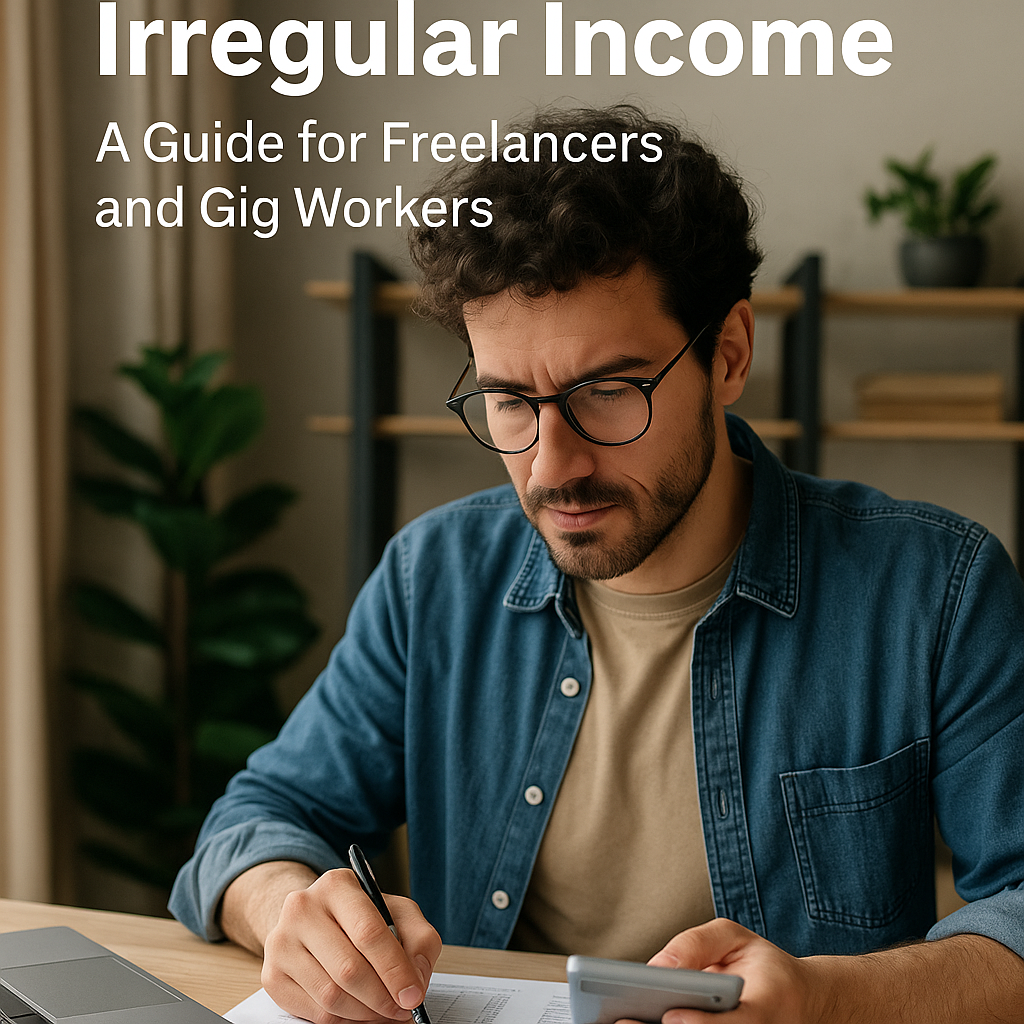Why Budgeting Is Harder With Irregular Income
If you’re a freelancer, gig worker, or entrepreneur, you know that not every month looks the same. Some months bring in more income than expected—others fall short. This variability makes traditional budgeting methods less effective.
But even without a consistent paycheck, you can still create a smart, flexible budget that gives you financial control.
Step 1: Know Your Minimum Monthly Needs
Start by calculating your bare minimum monthly expenses. This is the amount you need to survive—your essentials:
- Rent or mortgage
- Utilities
- Groceries
- Transportation
- Insurance
- Minimum loan payments
Knowing this number helps you set a baseline for what you must cover, even in low-income months.
Step 2: Determine Your Average Monthly Income
Look at your income from the past 6 to 12 months. Add it all up and divide by the number of months to get your average.
Example:
- 6-month total income: $18,000
- Average monthly income = $3,000
This number becomes your planning income—not your best or worst month, but your average. It gives your budget a consistent anchor.
Step 3: Use a Two-Tiered Budget System
Create two versions of your budget:
1. Bare-Bones Budget
This covers only your essential expenses. It’s your fallback plan during slow months.
2. Ideal Budget
Includes all essentials, plus discretionary spending (entertainment, dining out, travel, savings, etc.).
When income is high, operate from your ideal budget. When it drops, switch to bare-bones. This built-in flexibility keeps your finances stable.
Step 4: Build a Buffer Fund
Inconsistent income demands a buffer fund. This is a special savings account you use to “pay yourself” during lean months.
Start by saving at least one month’s expenses. Ideally, aim for 2–3 months of average income. Fund it during higher-income months and withdraw from it only when income falls below your needs.
Step 5: Pay Yourself a Set Amount
To create predictability, “pay yourself” a consistent amount each month from your business income or total deposits.
For example:
- You earn $5,000 one month
- Transfer $3,000 to your personal account
- Save the extra $2,000 in your buffer
Next month, even if you earn $2,000, you still pay yourself $3,000 using the buffer.
Step 6: Prioritize Fixed Costs and Eliminate Waste
If your income is unpredictable, it’s wise to minimize fixed expenses:
- Cancel unnecessary subscriptions
- Choose affordable housing
- Negotiate bills when possible
- Avoid long-term contracts
Keeping your baseline expenses low gives you breathing room and makes budgeting easier.
Step 7: Automate When Possible
You might think automation is impossible with inconsistent income—but it’s not. Once you’ve built a buffer:
- Automate transfers to savings and retirement
- Schedule recurring bills to be paid from your buffer
- Use alerts to monitor account balances
Automation brings stability and helps maintain discipline during high-income months.
Step 8: Track Everything Religiously
When income and expenses fluctuate, tracking becomes essential. Use apps or spreadsheets to record:
- Income by project/client/source
- Dates of payments
- Expenses (categorized and totaled)
This helps you predict patterns, spot trouble early, and plan smarter for future months.
Step 9: Adjust Monthly
Budgeting with irregular income requires monthly check-ins. At the start of each month:
- Review your current balance
- Estimate expected income
- Choose which version of your budget to follow
- Adjust plans if needed
Staying proactive helps you avoid surprises and keep your goals on track.
Final Thoughts: Control the Chaos With a Smart Plan
Irregular income doesn’t have to mean irregular financial health. With structure, strategy, and a few smart systems, you can live confidently, even without a fixed paycheck.
Freelancers and gig workers thrive when they treat income like a business—plan, track, and stay ready for change. That’s how you build lasting financial success, no matter how unpredictable the road may be.
